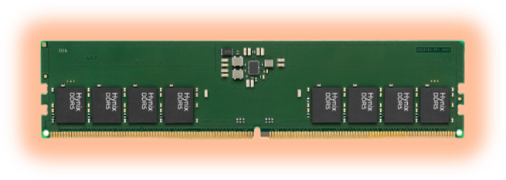Connecting the dots: Memory components for networking applications

Over the last decade, the volume of information and data created, captured, copied, and consumed on a global level has grown exponentially. In 2022, about 94 zettabytes of data were produced and consumed worldwide. With data connectivity and sharing on the rise, networking technology and infrastructure has soared. Globally the networking equipment market is projected to reach over $38 billion by 2028. While this is smaller than the market size of other long-life applications like medical equipment or industrial robotics, the importance of networking technology in everyday life cannot be ignored. Networking connectivity is nearly ubiquitous as it has become a pervasive part of day-to-day life for consumers, enterprises, and governments worldwide. It is estimated that in 2023, every internet user across the globe will have 3.6 networked devices and connections.
Decades of innovation
Network devices switch and route Internet Protocol (IP) packets from source to destination, allowing communication and interaction between the hardware on a computer network. Networking applications, like routers, switches, hubs, repeaters, modems, and access points, have existed since the early days of the internet but have gone through many product innovation cycles over the past decades as performance demands increased. Despite the fact that networking devices have continuously evolved, the adoption of updated systems, and replacements take time, making component end-of-life (EOL) a common challenge for engineers, designers, and procurement specialists in the supply chain.
At all times, for a long time.
Networking equipment typically operates in always-on mode for many years after deployment. As a consequence, networking applications are designed with components that have low power consumption and industrial operating ranges. The embedded components need to be robust, reliable, and long-lasting to avoid costly downtime. DRAM and FLASH provide specific memory functionalities in networking hardware. When devices are switched on, DRAM, like DDR3 and DDR4, is in charge of holding the operating system, storing routing tables, buffering IP packets, and providing temporary memory for the configuration files. The startup configuration and Internetwork Operating System (IOS) in networking equipment are stored by FLASH components and EMMCs.
Future-proofing network equipment
The pressure on networking infrastructure regarding bandwidth, footprint, and performance requires thorough qualification and specification of components that meet the specs, including long-term availability. As is generally the case with long-life application, networking equipment tends to outlive the lifecycle of the chip components it is designed with. That is also true for embedded memory components. To future-proof networking systems from the onset of the design, selecting the right components for the applications while keeping down-the-road component obsolescence in mind is essential. Working with a reliable supplier that provides long-term support is one way to mitigate supply chain challenges and weather potential shortages.
SMARTsemi is your supply chain partner for DRAM components, eMMC solutions, and SD/microSD Flash Memory Cards for long-life applications. With 20+ years of industry experience, we understand your challenges and have aligned our priorities with yours to simplify your memory chip supply chain for the long run. We know what you need before you need it. Get a jump start and request a sample today.







